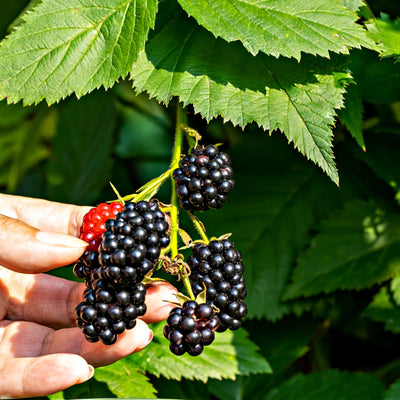Raised Bed Advantages in Gardening
Raised Beds vs. In-Ground Gardens
Gardening has really taken off in recent years, and it’s easy to see why. There’s something so satisfying about stepping into your own yard and growing something beautiful (or delicious). Whether you're dreaming of homegrown veggies, colorful flowers, ornamental shrubs, or a bit of everything, it all starts with a simple question: How should I build my garden?
One of the first choices you'll run into is whether to go with raised garden beds or stick with traditional in-ground gardening. Raised beds have become super popular lately, but that doesn’t necessarily mean they’re the best fit for your space or goals.
In this piece, we’ll walk through the facts with both options so you can figure out what makes the most sense for you and start building the garden you’ve been dreaming about.
Raised Bed Gardening
This modern form of gardening takes gardening ‘up’ a notch by containing soil and plants in an above-ground frame or structure. They are most often made with wood or metal and can be homemade or store bought. In truth, they are simply very large garden boxes set on the ground. Depending on growing goals, the depth of these beds may be anywhere as short as 6 inches high to several feet. No matter the depth, the structure is then filled with a mixture of soil and other organic materials.
Benefits
· Improved Soil Control
With a raised bed, you are almost always going to be filling it in with soil you purchase, rather than worrying about amending the existing soil in your own yard. This is especially beneficial if your area has dense clay or rocky soil that is difficult to grow most plants in.
· Better Drainage
Because the soil is raised off the ground, it is easier for excess moisture to run off rather than pool around the plants. This is particularly helpful to plants that do not like wet feet, like Oxeye Daisies.
· Easier Access
Because the garden isn’t so low to the ground, you will need to do significantly less crouching or bending (or none, depending on how high you make the garden!). This is great if you are growing harvestable vegetables or looking to make a bouquet out of some fresh Tall Phlox blooms. No matter the plant type, however, this makes garden maintenance like weeding or pruning much less of an exhausting chore.
· Neat Appearance
Perhaps the biggest draw to raised bed gardening is the neat and tidy look it has. By precisely controlling size, shape, and material, you can truly design the garden to your liking.
Potential Drawbacks
· Up-front Cost and Labor
To set up raised beds, whether attempting DIY or purchasing ready-made kits, it will take up some time, money, and work. The result is worth it, but it is important to consider this before getting in over your head.
· Requires More Watering
While better drainage is typically a good thing, this also means that the beds will dry out quicker if you’re not careful. You may need to water these types of beds more frequently.
In-Ground Gardening
While some gardening magazines may say this is the old-fashioned way, it is important to not overlook what makes this type of garden bed a timeless classic. It’s the way people have grown food for centuries, and it’s still a tried-and-true method today.
Benefits
· Low Cost
Because the ground or space you’ll be growing in already exists, there is no fuss to begin preparing the bed. With some tilling and amending the existing soil with some compost, you’re pretty much set.
· Better Root Insulation
In the cold months, roots underground are in danger of frost that can lead to killing off the plant. With in-ground gardening, however, the roots are properly insulated due to the natural conditions of the soil. This natural insulation helps plants like Wild Garlic to proliferate well into the next growing season.
· Scalability
If you want to expand the garden (or shrink it) the following year, you can easily alter the size of the in-ground bed. This way, there is much more flexibility and less commitment.
· More Space for Roots
Some plants have root systems that are deep and require more infinite space to grow. Fruiting plants, such as Wild Blackberry shrubs, prefer the larger space to grow.
Potential Drawbacks
· Less Control over Soil Quality
While it is recommended to always amend the existing soil for a garden bed, this still leaves you at the mercy of the quality of the existing soil. This may also increase the risk of weeds since they can spread more easily in-ground.
· Harder on the Body
Being so low to the ground, you will have to crouch, bend, and stoop almost the entire time you garden. Keep this in mind when determining if in-ground gardening is practical for your lifestyle.
The Bottom Line
While you don’t have to stick with just one, as gardening is all about experimenting, it is important to carefully weigh the factors of both garden bed types. Consider the following:
· Budget: If you are operating on a tighter budget, then in-ground is a better option to start out with.
· Your Native Soil: If your soil is heavy, rocky, or poor, then consider going with a raised bed which you can fill with higher quality soil.
· Physical Limitations: If you are nursing any injuries or have mobility issues, consider raised beds to alleviate the need for excessive strain on your back.
· Crop Types: Sprawling or large plants (shrubs, vining plants) grow best in the ground. Vegetables, herbs, and shallow-rooted plants thrive in raised beds. No matter which you go with, it won’t be the wrong choice as long as you enjoy growing the plants. Have some fun with it and don’t be afraid to make mistakes, that’s just a key part of the process.




